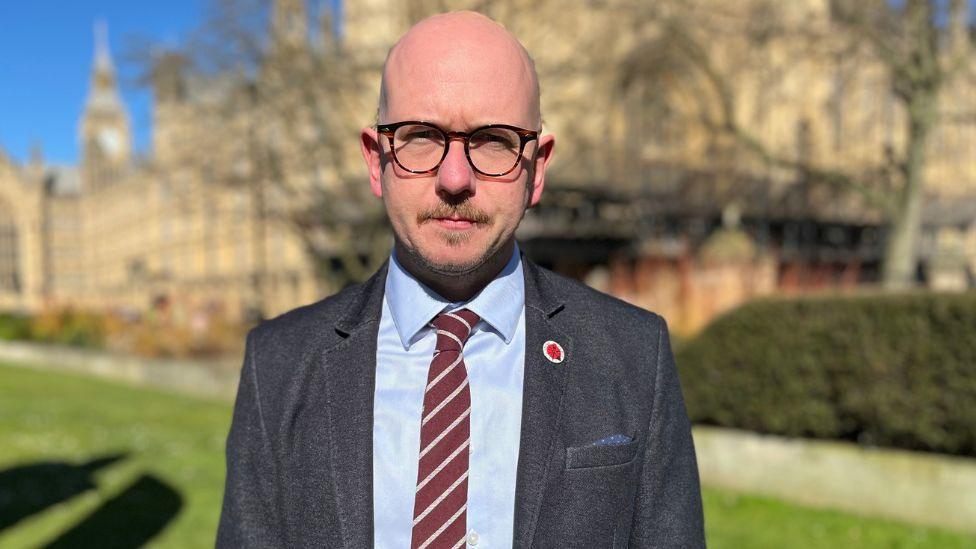What do UK welfare reforms mean for Scotland?
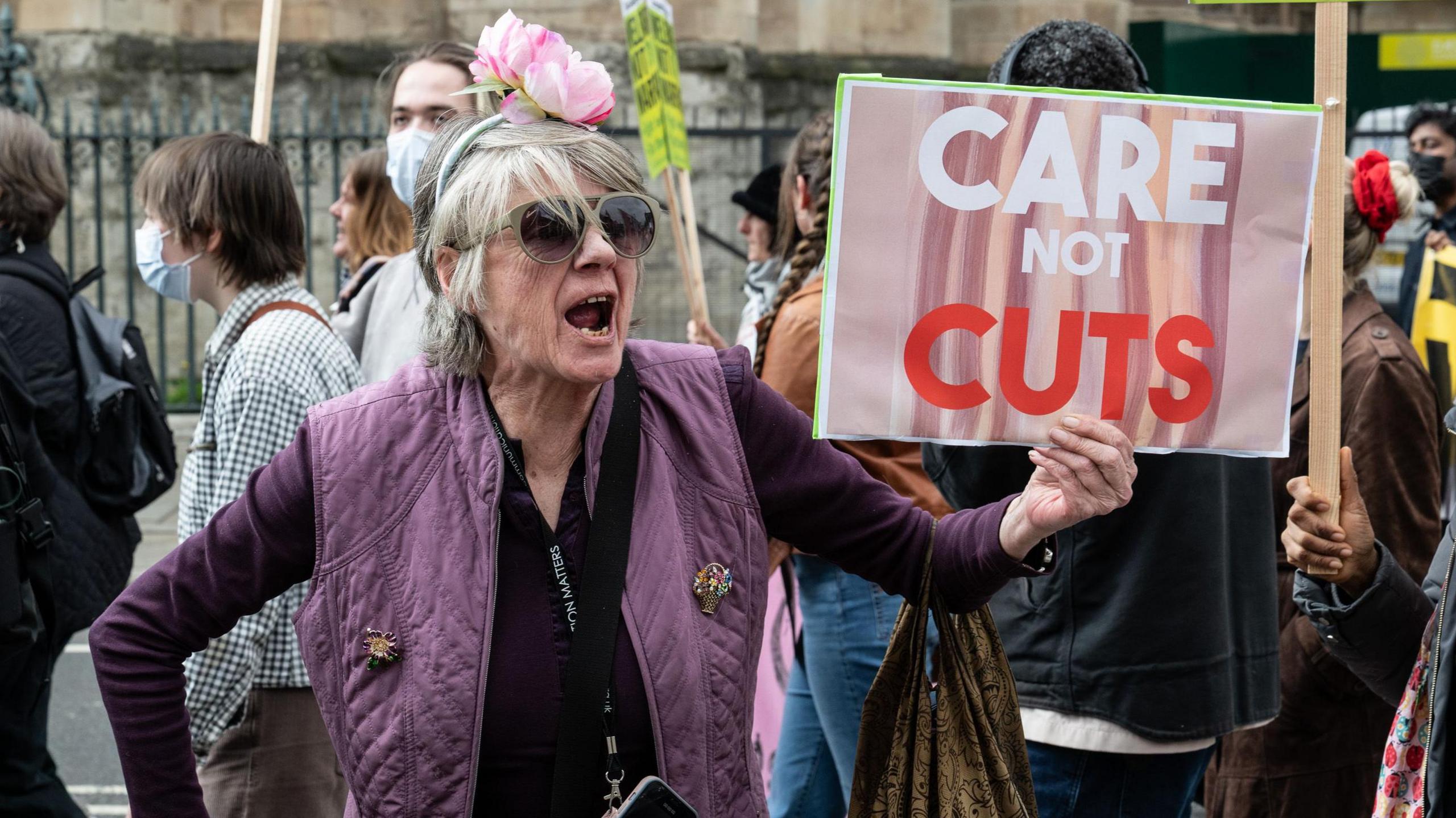
Disabled activists have staged a series of protests against over plans to cut disability benefit
- Published
The UK government's welfare reforms have made it through a vote in parliament - but only after substantial concessions were made to rebel backbenchers.
The planned changes to eligibility for Personal Independence Payments (Pip) and the health element of Universal Credit will only apply to new claimants, and have been delayed until after a review of qualifying criteria.
Scotland has its own devolved social security system - so what could Sir Keir Starmer's proposals mean north of the border?
What is different in Scotland?
The Personal Independence Payment is currently being replaced by a different benefit in Scotland - the Adult Disability Payment (ADP).
So far 99% of Pip cases have been transferred to ADP, and the rest will be complete by the end of the year.
There are currently more than 475,000 people on the benefits in Scotland, about 10% of the adult population.
That number has risen by 50% in less than three years, and more than half the claimants are over 55.
Changes to Pip have been delayed, but in any case the Scottish government has been clear that there will be no cuts to ADP - so nothing will change for claimants north of the border.
Humiliation for Starmer as he loses control of Commons
- Published2 July
What has been driving the rise in disability benefit claims?
- Published30 June
Universal Credit still applies across the UK, so reforms to that will affect people north of the border.
Anyone currently receiving the health element of the benefit will continue to get it, but if the plans are approved then anyone starting a claim in future may be assessed more rigorously.
However the changes will also see the standard allowance of Universal Credit increase above inflation for the next four years - which means the move overall will actually cost the government money, rather than saving anything.
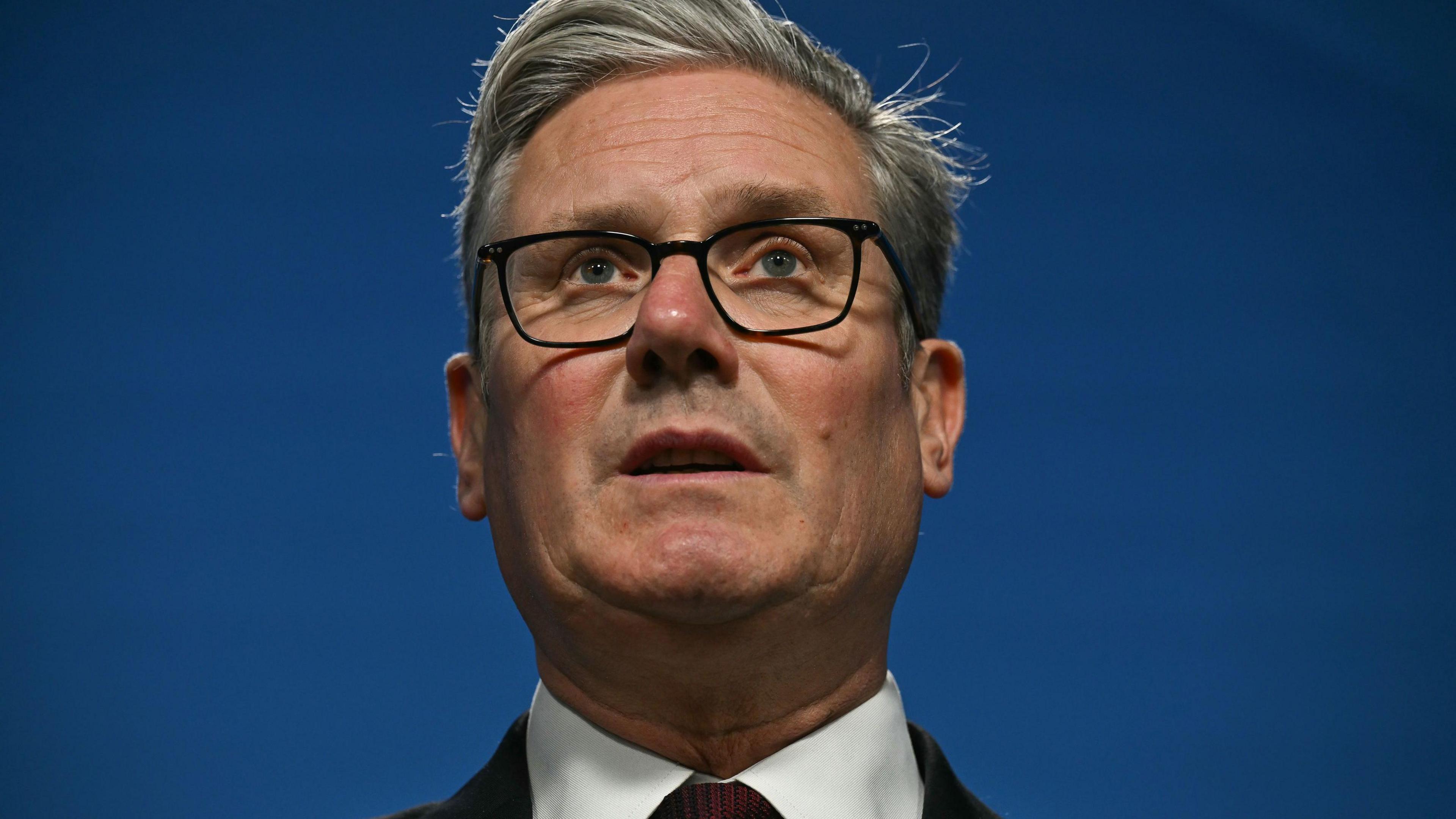
The U-turn is the government's third in a month and followed one of Sir Keir Starmer most difficult days yet in Downing Street.
Social Justice Secretary Shirley-Anne Somerville has been clear that the Scottish government "will not follow Labour's lead on any of these changes".
We essentially have two governments moving in different directions when it comes to social security.
The UK government is still keen to get a grip on welfare spending in light of a forecast £30bn increase in the cost of working-age health-related benefits - although the rebellion over this bill will make it hard to actually achieve that.
The watchword has long been about getting people back into work and keeping budgets from ballooning in future years.
Meanwhile, the Scottish government prides itself on taking a more generous approach.
It has set up new offerings like the Scottish Child Payment, currently set at £27.15 per week for eligible families.
Government modelling suggests that policy alone will keep 40,000 children out of relative poverty this year.
How much does Scotland spend on social security?
Scottish ministers have also uprated benefits by inflation each year - including the new winter fuel payment. That allows them to trumpet that it is a more generous offering than that available down south, even if the difference is only £3.
That means social security accounts for an increasingly large share of the Scottish government's budget.
The Scottish Fiscal Commission says spending on it was £6.1bn in 2024-25.
It forecasts that this will rise to £7.7bn next year and pass £9bn by 2029-30.
The Adult Disability Payment makes up the lion's share of that figure, with the cost set to hit £5bn by the end of the decade.
That's almost 10 times more than the Scottish Child Payment (£517m in 2029-30), and almost 30 times more than the devolved winter fuel payment (£174m) - benefits which politicians spend far more time talking about.
It's a reminder that there can be a big difference between the political importance of a policy and the financial weight of it.
What could Westminster changes mean for Scotland's funding?
The key question is how this is all going to be paid for.
At the end of the day Scottish First Minister John Swinney has the same problem as Prime Minister Sir Keir Starmer - budgets are finite, and costs are rising.
Spending on social security in Scotland is already £1.2bn higher than the block grant which comes from Westminster. The gap is forecast to grow to £2bn by 2029-30.
That's £2bn that the Scottish government has to find elsewhere in its budget, or raise from taxation.
And if the UK government does ultimately reduce its welfare spending, that will in turn reduce the amount of funding flowing to Holyrood and widen the financial gap.
Sir Keir's original plan was to save £5bn by 2030. That dropped by half under the first round of concessions, and has now been wiped out entirely as the Pip changes are pushed off into the future.
However that means Chancellor Rachel Reeves will need to find savings elsewhere in her budget - or break her self-imposed fiscal rules by increasing taxes or borrowing.
Scottish government officials are already scratching their heads about what this means for their own budget, but they are unlikely to find out for sure in the short term.

The changes will apply only to new claimants from November 2026, sparing 370,000 current claimants out of the 800,000 identified by the DWP impact assessment
Allocations have fluctuated quite a bit as policy has shifted at Westminster, so it's hard to predict what the figures will be until the chancellor announces them.
But if we remain in a big-picture position where the UK government is seeking to cut its welfare bill while the Scottish government's one increases, it's obvious that the financial gulf is going to grow.
The SNP administration has already leaned on its powers over income tax to fund some of this extra spending, with ministers again proud to talk about a more "progressive" system that asks those with the broadest shoulders to pay more to support public services.
But Finance Secretary Shona Robison has been clear that they can't keep going back to the well on that front. Further tax rises have already been ruled out for the rest of this parliamentary term.
So they have embarked on a programme of public service reform, which includes targets to reduce the public sector workforce by 0.5% per year and to cut the cost of running government and public bodies.
A previous commitment to universal entitlements has also fallen by the wayside.
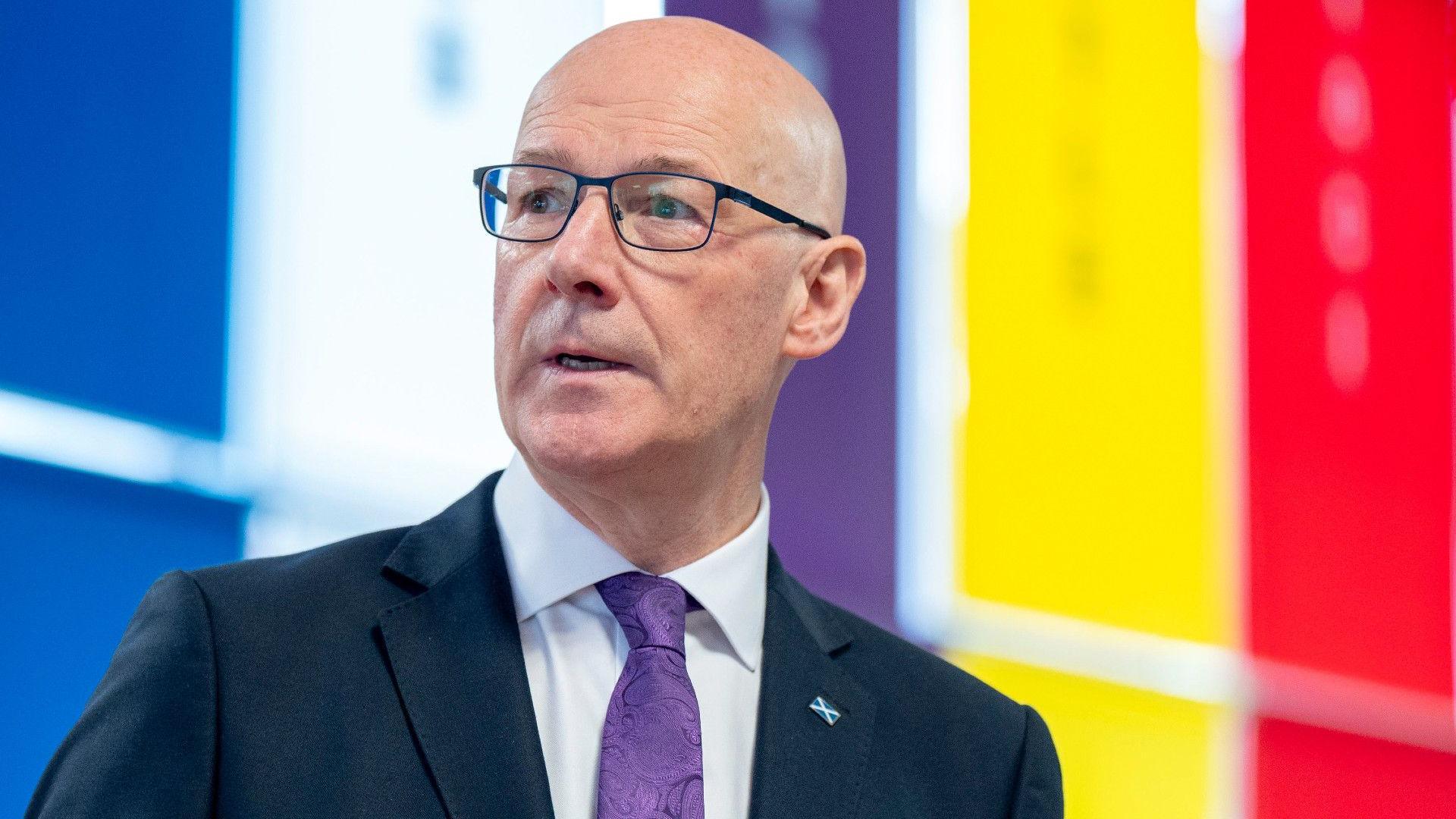
John Swinney is aiming to turn around the SNP's fortunes after the party lost 39 seats at last year's general election
When setting up the Scottish version of the winter fuel payments, ministers had insisted on a universal approach - at the very least a payment to all households, if not all individual pensioners.
But they have now decided to copy the UK government's model of automatically clawing back payments from better-off households, and targeting funds at those most in need.
At the end of the day, all of this feeds into the politics of next year's Holyrood election, with the SNP and Labour already locked in a fierce battle for a fairly similar chunk of the electorate.
John Swinney built his efforts to turn around the SNP's fortunes after last year's general election drubbing on a pledge to mitigate the two-child cap on some UK benefit payments.
Again this is something which has a much bigger political impact than a financial one. The Scottish Fiscal Commission (SFC), which provides independent economic forecasts, reckons this will cost about £200m a year by 2030.
But the first minister has not missed an opportunity to hammer home his message that the SNP will be more generous to Scottish voters than Labour is being at Westminster.
What will this mean at the polls?
His party's campaigning is based very heavily on its record of big-state interventions and universal entitlements.
A leaflet they circulated during last year's election campaign listing the SNP's achievements in office gave prominent place to the Scottish Child Payment, alongside free tuition; free personal care; free prescriptions; free bus travel; free school lunches; free baby boxes and free childcare.
Labour, meanwhile, have majored on responsible stewardship of the public finances in their UK campaigns.
And Scottish leader Anas Sarwar is not promising a tax-and-spend approach at Holyrood.
He says he'd ideally like to cut the tax burden, while maintaining spending on public services by growing the economy.
Ultimately these are two parties which face similar problems in government - tight budgets, weak growth and spiralling costs.
The answers they provide - and the extent to which voters trust them to deliver on them - are going to play a critical role in next May's election.
Related topics
- Published27 June
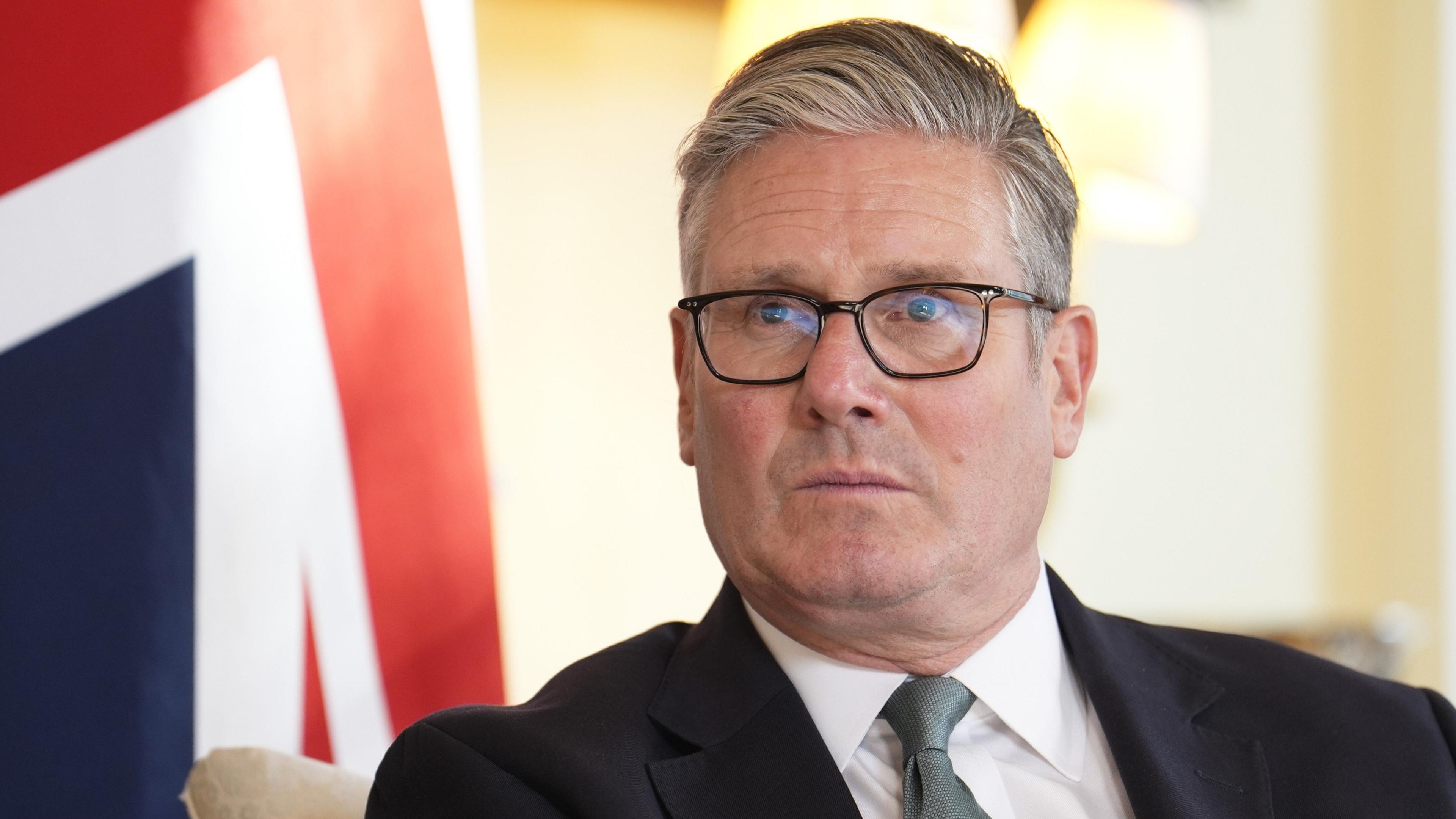
- Published27 June
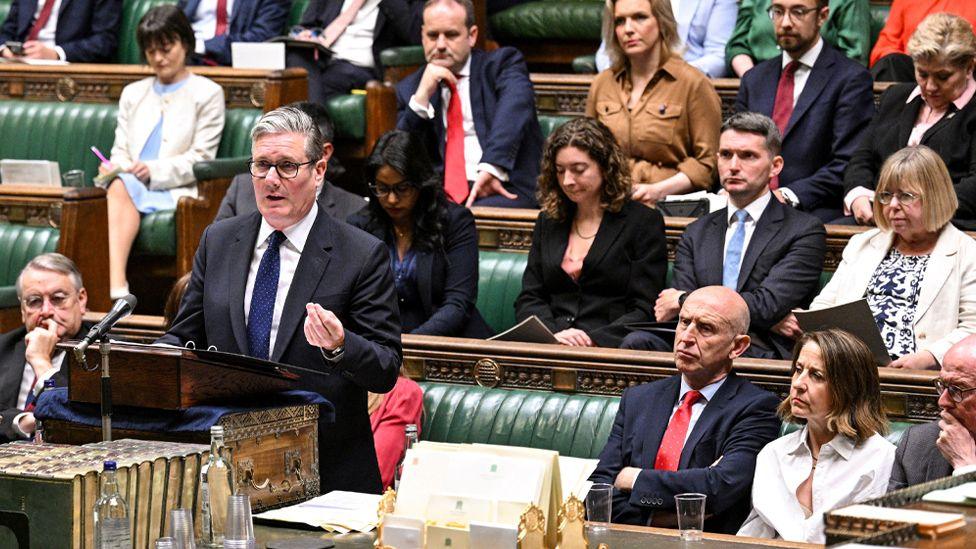
- Published24 June
